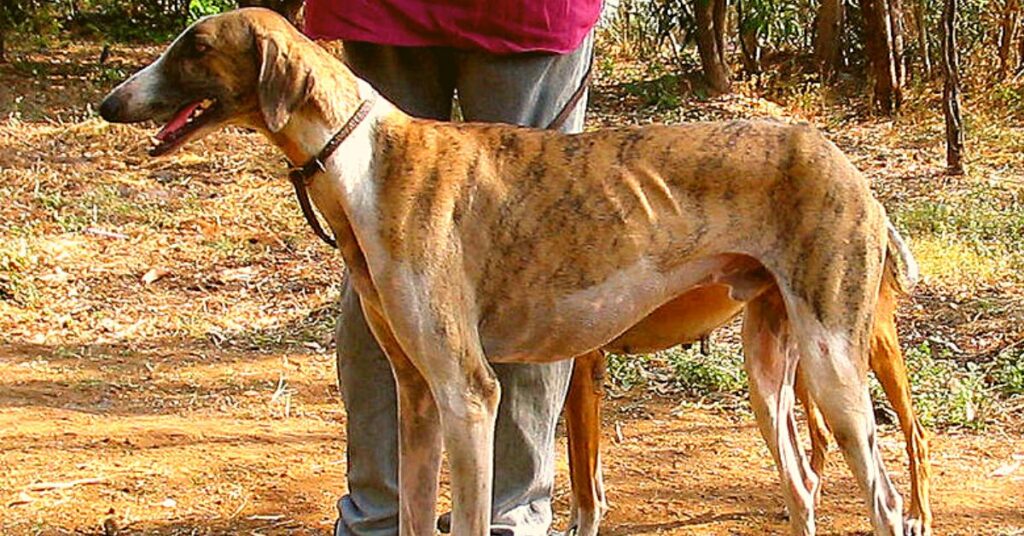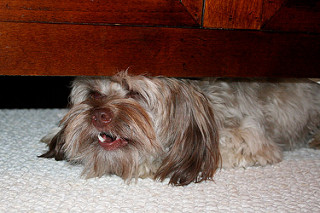About Caravan Hound Dog
In India, the Caravan Hound or Caravan Dog is known by a number of names. Even if none of those names may be familiar to you, the breed can be identified by its size and build. The Caravan Hound is a medium-sized breed that resembles the Greyhound in terms of its long, lithe frame. The Indian Army has more recently deployed the Caravan Hound, a kind of sighthound, for border patrol and surveillance as well as traditional uses like hunting and guarding.

Is It Called Mudhol Hound Dog or Caravan Hound Dog?
The Caravan Hound is a sighthound typically employed for hunting and guarding that is frequently kept as a pet by peasants on India’s Deccan Plateau. The breed is thought to be a direct descendent of Asian and Arabian sighthounds like the Saluki or Tazi because it was brought from Arabia and Central Asia to western India. The breed is sometimes sometimes referred to as the Mudhol Hound since it is well-liked in the Mudhol Taluk of Karnataka. The breed’s feathered variant is known by the names Pashmi or Karwani.
Stats Of Caravan Dog
| Height: | 22-28 inches |
| Weight: | 45-85 pounds |
| Lifespan: | 12-plus years |
| Colors: | Sable, cream, red, fawn, gray, black |
| Suitable for: | Active families, those looking for a watchdog |
| Temperament: | Reserved, loyal, sensitive |
Pedigree
It is believed that the Caravan Hound is a direct ancestor of the Saluki, sometimes referred to as the Persian Greyhound or Tazi.
Food/Diet
According to its adult size, the Caravan Hound is a large breed, thus it might benefit from a large-breed dog diet. However, keep in mind that these recipes may not satisfy your dog’s high energy requirements because they tend to be lower in fat than conventional adult dog diets. If you want an active or working breed, especially if you want to train your dog to hunt, you could be better off with that.
How To Identify A Caravan Dog?
You can identify a caravan dog with the following features
- The head of the Caravan Hound has a tapering mouth and is long, slender, and broad between the ears. Though they appear weak at first glance, the jaws are long and strong. The huge, black or liver-colored nose is quite prominent.
- The ears are of average size and are situated next to the skull.
- The eyes are big and oval-shaped, and they range in colour from dark hazel to amber. The look is one of piercing intensity.
- The neck is long, slim, and muscular, and it blends well with the back-laid shoulders.
- Long, straight, and well-boned are the forelegs. Long, wide, and well-muscled, the back has a modest flare over the loin. Wide and deep loins are present.
- The ribs are well-sprung and the chest is powerful and deep. The stomach has been tucked in.
- Wide and well-muscled hindquarters are seen. The tail is carried in a natural curve, placed low, and has a solid base. All four legs are flexed during the high-footed gait.
- The tail, ears, legs, and backs of the thighs may all have fringes, and the coat may be short, silky, smooth, or both.
Also Read: Top 5 Best Dog Food Brands In India
Temperament/Behavior
The Caravan Hound is often a calm and gentle dog that, with the right training and socialisation, can adapt to family life rather well. It is best suited to a home with a fenced yard and a family who will give him lots of activity, yet it may be adaptive to apartment or condo living with enough exercise. Though they are always inclined to be apprehensive around strangers since they do not like to be touched by unfamiliar people, a quality that makes them good watchdogs, these dogs can grow fairly loyal to family. If these dogs aren’t given kind, respectful treatment, they run the risk of developing anxiety or aggression.
Typical Health Issues
The Caravan Hound is typically thought of as a tough breed that is not susceptible to any genetic health issues. But given his size and ancestry, he might be more susceptible to conditions including bloat, eye difficulties, ear infections, and hip dysplasia.
Expected lifespan
The Caravan Hound has a 10 to 15-year lifespan on average.
Exercise Requirements
The Caravan Hound has relatively high exercise requirements because it is a hunting breed. This breed is extremely strong and resilient, able to function under even the most trying circumstances. These dogs should have at least an hour of rigorous exercise every day, preferably in a fenced yard where they can also get some additional exercise.
AKC Recognition Of Mudhol Hound Dog
The Indian National Kennel Club (INKC) and the Kennel Club of India (KCI) both presently recognise the Caravan Hound Dog as a breed (INKC). The breed is listed as the Caravan Hound by the KCI and the Mudhol Hound by the INKC.
Coat
With long limbs, a slim frame, and a lithe, athletic demeanour, the Caravan Hound has a striking Greyhound-like appearance. Although there is a variant that has silky feathering on the ears, legs, and tail, the coat is generally very short and smooth. Dogs with feathery coats are called Karwani or Pashmi. Fawn, crimson, cream, black, mouse grey, or any of these hues broken with a little amount of white are acceptable colours for the Caravan Hound breed.
Caravan Hound Puppies
The Caravan Hound typically has litters of 3 to 7 pups. Currently, the Caravan Hound is being actively bred by roughly 750 families in the Karnataka town of Mudhol. As a hunting breed, this dog should be socialised and trained from an early age. In order to prevent your puppy from developing so quickly that he develops musculoskeletal problems as an adult, you may wish to feed him a large-breed formula. Puppies often grow very quickly.
Three Unknown Facts Regarding the Caravan Hound
- A set of caravan hounds were originally given to King George V. As a member of the Mudhol royal dynasty, Shrimant Rajesaheb Malojirao Ghorpade took note of this breed and worked very hard to revive it. He started selectively breeding the dog after observing that the locals utilised it for hunting. Then, when King George V paid a visit, he gave him two of the dogs.(Trusted Source)
- The military makes use of them.
This dog has served in border patrol and surveillance roles for the Indian Army. Six dogs are the only ones being tested so far. Yet more are probably on the way. - Breeding these dogs in India can be quite profitable.
Breeders of this dog in India frequently earn more money than people from similar socioeconomic backgrounds. Of course, some breeders produce dogs of superior quality than others and can charge more for their animals.
Conclusion
Outside of India, the Caravan Hound is a rare breed of dog. Although they are also employed as protection dogs, they are mostly used as hunting dogs. To control rabbit numbers and ensure a better harvest, they are most frequently utilised by Indian tea and coffee growers.
Although these dogs have a reputation for being violent, their aggression levels are not significantly higher than those of other breeds. They may not enjoy being petted by a stranger since they are wary of new people. However, they may become good household pets if they receive early socialisation. They make excellent watchdogs since they are dependable.



